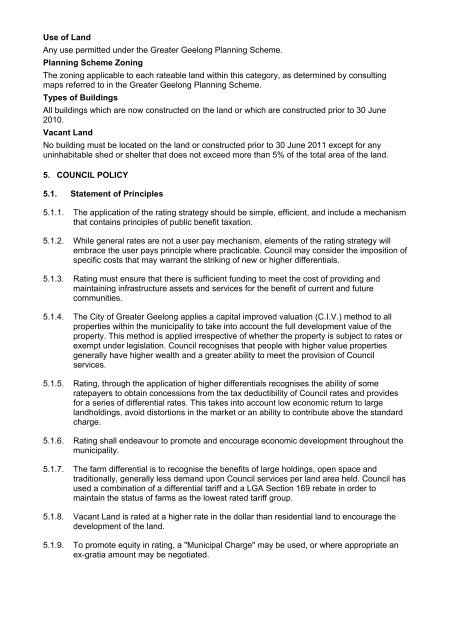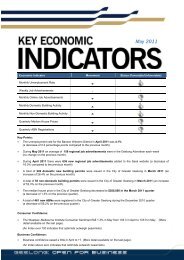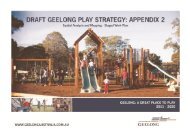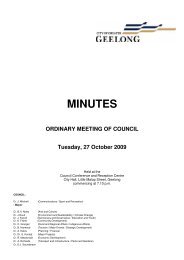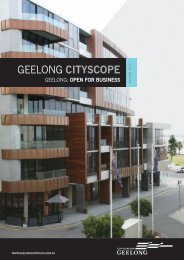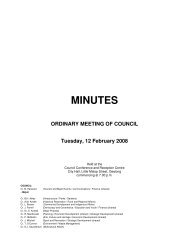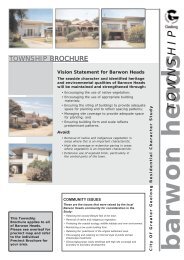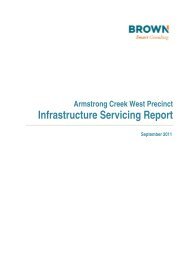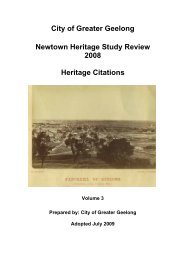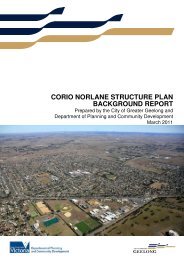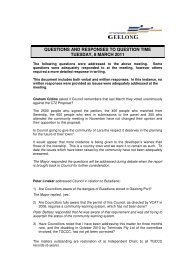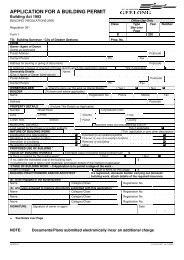CITY OF GREATER GEELONG 2012-2013 Rating StRategy
CITY OF GREATER GEELONG 2012-2013 Rating StRategy
CITY OF GREATER GEELONG 2012-2013 Rating StRategy
Create successful ePaper yourself
Turn your PDF publications into a flip-book with our unique Google optimized e-Paper software.
Use of Land<br />
Any use permitted under the Greater Geelong Planning Scheme.<br />
Planning Scheme Zoning<br />
The zoning applicable to each rateable land within this category, as determined by consulting<br />
maps referred to in the Greater Geelong Planning Scheme.<br />
Types of Buildings<br />
All buildings which are now constructed on the land or which are constructed prior to 30 June<br />
2010.<br />
Vacant Land<br />
No building must be located on the land or constructed prior to 30 June 2011 except for any<br />
uninhabitable shed or shelter that does not exceed more than 5% of the total area of the land.<br />
5. COUNCIL POLICY<br />
5.1. Statement of Principles<br />
5.1.1. The application of the rating strategy should be simple, efficient, and include a mechanism<br />
that contains principles of public benefit taxation.<br />
5.1.2. While general rates are not a user pay mechanism, elements of the rating strategy will<br />
embrace the user pays principle where practicable. Council may consider the imposition of<br />
specific costs that may warrant the striking of new or higher differentials.<br />
5.1.3. <strong>Rating</strong> must ensure that there is sufficient funding to meet the cost of providing and<br />
maintaining infrastructure assets and services for the benefit of current and future<br />
communities.<br />
5.1.4. The City of Greater Geelong applies a capital improved valuation (C.I.V.) method to all<br />
properties within the municipality to take into account the full development value of the<br />
property. This method is applied irrespective of whether the property is subject to rates or<br />
exempt under legislation. Council recognises that people with higher value properties<br />
generally have higher wealth and a greater ability to meet the provision of Council<br />
services.<br />
5.1.5. <strong>Rating</strong>, through the application of higher differentials recognises the ability of some<br />
ratepayers to obtain concessions from the tax deductibility of Council rates and provides<br />
for a series of differential rates. This takes into account low economic return to large<br />
landholdings, avoid distortions in the market or an ability to contribute above the standard<br />
charge.<br />
5.1.6. <strong>Rating</strong> shall endeavour to promote and encourage economic development throughout the<br />
municipality.<br />
5.1.7. The farm differential is to recognise the benefits of large holdings, open space and<br />
traditionally, generally less demand upon Council services per land area held. Council has<br />
used a combination of a differential tariff and a LGA Section 169 rebate in order to<br />
maintain the status of farms as the lowest rated tariff group.<br />
5.1.8. Vacant Land is rated at a higher rate in the dollar than residential land to encourage the<br />
development of the land.<br />
5.1.9. To promote equity in rating, a "Municipal Charge" may be used, or where appropriate an<br />
ex-gratia amount may be negotiated.


